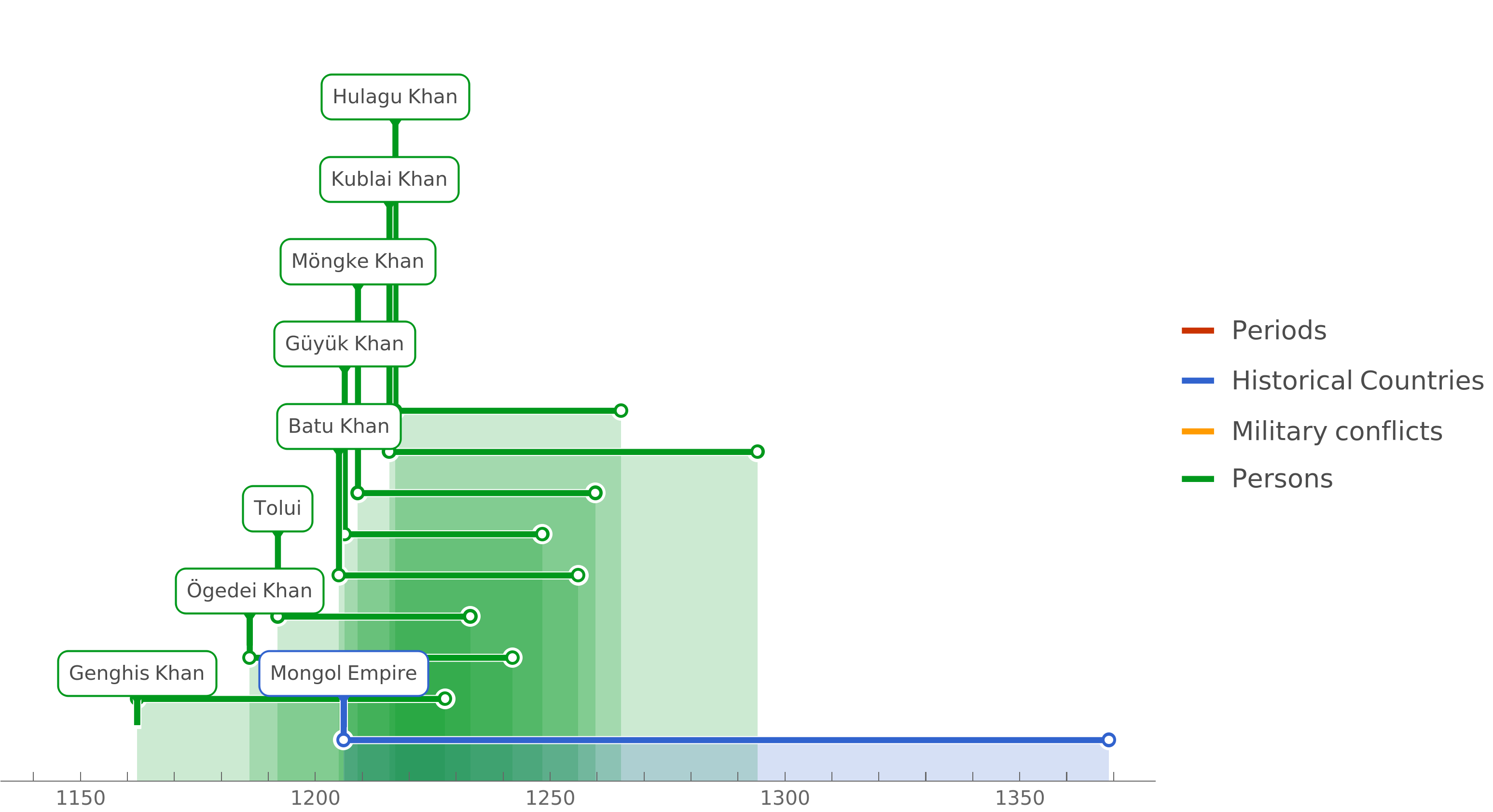Timeline of Khans

- Genghis Khan (1206-1227): The founder of the Mongol Empire, he united the Mongolian tribes and initiated the expansion of the empire across Eurasia.
- Ögedei Khan (1229-1241): Genghis's third son, he continued the expansion of the empire and helped establish its administrative structure.
- Tolui (1232-1248): The youngest son of Genghis Khan, he played a crucial role in military campaigns and served as regent during Ögedei’s reign.
- Güyük Khan (1246-1248): The son of Ögedei Khan, his reign was marked by internal conflicts and struggles for power.
- Mongke Khan (1251-1259): A grandson of Genghis Khan, he pursued military campaigns in China and the Middle East.
- Kublai Khan (1260-1294): The grandson of Genghis Khan, he founded the Yuan Dynasty in China and was known for his cultural achievements.
- Hulagu Khan (1256-1265): A grandson of Genghis Khan, he led the conquest of Baghdad and established the Ilkhanate in Persia.
- Batu Khan (1227-1255): A grandson of Genghis Khan, he led the Golden Horde and was instrumental in the Mongol invasions of Europe.